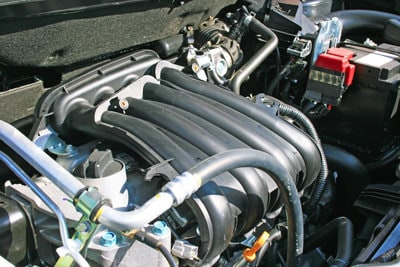Table of Contents
- Additional Considerations
- Poor Cooling PerformanceWhen your AC doesn’t seem to cool as efficiently as it used to, the culprit is often a clogged or dirty air filter. A clogged filter restricts airflow, reducing the system’s cooling capacity. Solution
- Inadequate AirflowIf you notice weak or inadequate airflow from your vents, it could be due to a dirty evaporator coil or ductwork issues. Solution
- Uneven CoolingUneven cooling can result in certain areas of your home being too cold while others remain warm. This issue may be due to a blocked or closed vent, dirty coils or faulty thermostats. Solution
- Strange NoisesUnusual noises, such as grinding, rattling or squealing, can indicate issues with your AC’s mechanical components. These noises may be due to loose or damaged parts. Solution
- Water LeaksFinding water pooling around your AC unit or inside your home can be alarming. It often points to a clogged condensate drain line or a refrigerant leak. Solution
- AC Won’t Turn OnIf your AC refuses to start, check the thermostat settings first. It might be set to a temperature higher than the current room temperature. Solution
- Frozen Evaporator CoilA frozen evaporator coil indicates an airflow issue or refrigerant problems. Solution
- Additional Considerations
Additional Considerations
Air conditioning systems are a modern marvel that keeps our homes and workplaces comfortable during scorching summers. However, like any mechanical system, they can occasionally encounter issues that disrupt their cooling efficiency. In this article, we will explore common AC problems and provide valuable tips for troubleshooting and tackling these issues with DIY fixes. With a little knowledge and some basic tools, you can save both time and money while ensuring your AC keeps you cool when you need it most.
The advent of air conditioning systems has indeed transformed our lives, offering respite from the sweltering heat and ensuring our homes and workplaces remain comfortable year-round. Nevertheless, even these modern marvels are not immune to occasional hiccups that can affect their cooling efficiency. In this article, we embark on a journey to demystify common AC problems and equip you with practical tips for troubleshooting and addressing these issues with DIY solutions. Armed with a bit of knowledge and a few basic tools, you can not only save precious time and money but also guarantee that your AC system stands ready to provide the cool comfort you rely on when the mercury rises.
**1. Uneven Cooling: Do you notice temperature disparities within your home? It could be due to blocked vents, clogged filters or improper insulation. By cleaning vents, changing filters regularly and ensuring proper insulation, you can restore even cooling throughout your living space.
**2. Insufficient Cooling: If your AC isn’t cooling as effectively as it used to, it might be due to a refrigerant leak, a malfunctioning compressor or dirty evaporator coils. Inspect for visible leaks, clean the coils and consider reaching out to a professional for refrigerant checks and compressor diagnostics.
**3. Poor Airflow: Restricted airflow can lead to decreased cooling efficiency. Check for obstructions in your air ducts or dirty air filters. Clear any blockages and replace filters to restore proper airflow and maintain peak performance.
**4. Strange Noises: Unusual sounds from your AC unit can be disconcerting. Grinding, squealing or banging noises may indicate issues with fan motors, loose components or worn-out belts. Identifying and addressing these problems early can prevent further damage and costly repairs.
**5. Leaking or Condensation: If you notice water pooling around your AC unit or condensation forming excessively, it may signify a blocked drain line or a refrigerant leak. Clearing the drain line or repairing leaks promptly can prevent water damage and maintain the unit’s efficiency.
**6. Thermostat Troubles: Sometimes, the culprit isn’t the AC unit itself but the thermostat. Incorrect settings, dead batteries or faulty sensors can lead to cooling issues. Ensure your thermostat is functioning correctly and calibrated to your desired temperature.
**7. Foul Odors: Unpleasant odors emanating from your AC system are often due to mold or mildew growth within the ductwork or evaporator coils. Cleaning or replacing affected components and using air purifiers can help eliminate odors and improve indoor air quality.
**8. Short Cycling: Rapid cycling on and off can strain your AC system and increase energy consumption. Potential causes include clogged air filters, improper thermostat settings or issues with the compressor. Addressing these factors can help regulate cycling and reduce wear on your unit.
**9. Inadequate Maintenance: Regular AC maintenance is essential for its longevity and efficiency. DIY tasks like cleaning or replacing filters, removing debris from outdoor units and lubricating moving parts can keep your system in top shape.
**10. Professional Assistance: While many issues can be resolved with DIY efforts, it’s crucial to recognize when a problem requires professional intervention. If you’re unsure about a particular problem or lack the necessary expertise, calling an HVAC technician can prevent further damage and ensure a proper fix.
In conclusion, air conditioning systems are a modern-day blessing, but they can encounter problems. By arming yourself with knowledge and a willingness to tackle common issues, you can troubleshoot and address these problems independently, saving both time and money. However, it’s essential to know your limits and seek professional assistance when necessary to ensure the continued efficiency and reliability of your AC system. A well-maintained and efficiently functioning AC unit will continue to provide the cool comfort you need, even on the hottest summer days.
For a comprehensive look at this subject, we invite you to read more on this dedicated page: Common policy problems and what researchers can do about them …
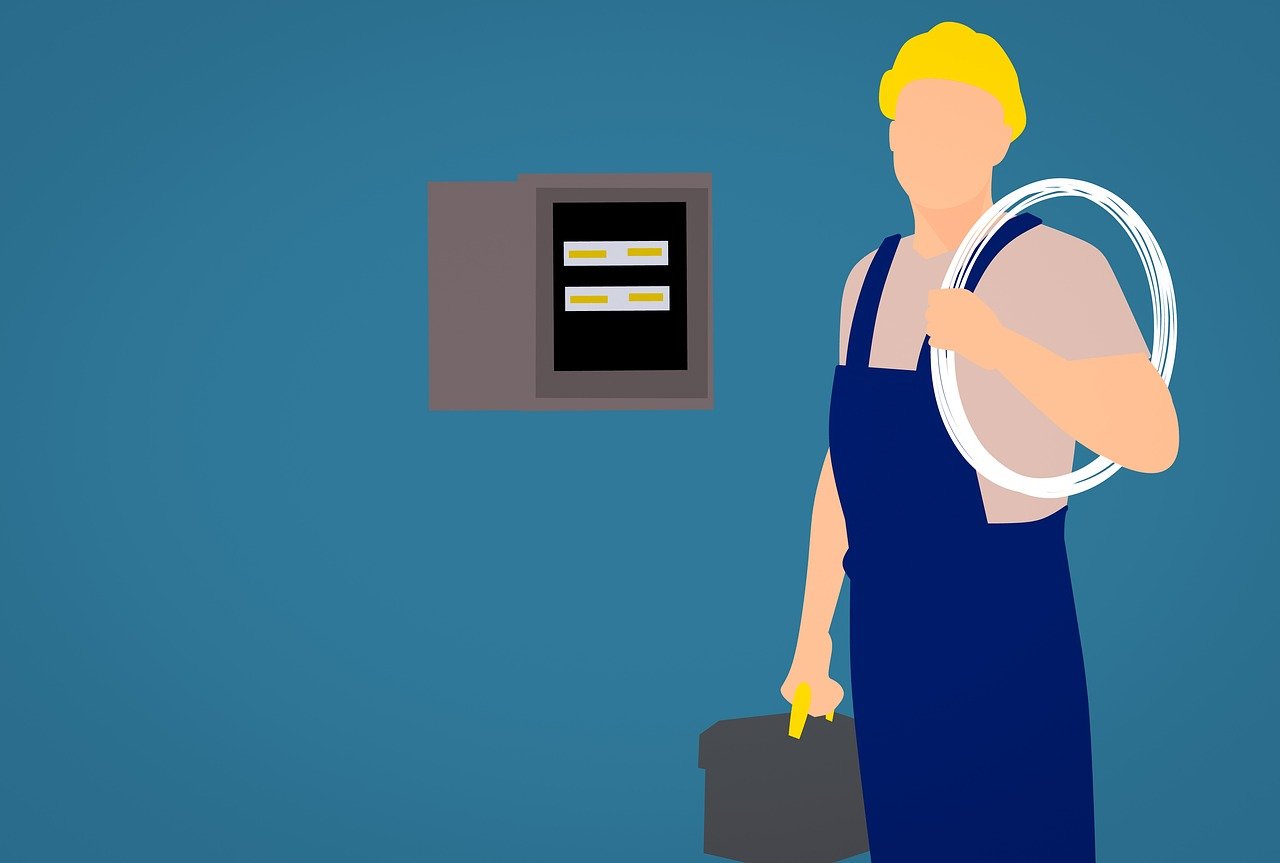
Poor Cooling PerformanceWhen your AC doesn’t seem to cool as efficiently as it used to, the culprit is often a clogged or dirty air filter. A clogged filter restricts airflow, reducing the system’s cooling capacity. Solution
Regularly replace or clean the filter, typically every one to three months, to maintain optimal airflow and cooling performance.
Regularly replacing or cleaning your air conditioner’s filter is a fundamental maintenance task that should not be overlooked. It plays a pivotal role in ensuring that your cooling system operates at peak performance and delivers the comfort and efficiency you expect. Here’s why this routine upkeep is so essential:
Air Quality Improvement: The primary function of the filter is to trap airborne particles such as dust, pollen, pet dander and allergens. Over time, these particles accumulate on the filter’s surface, reducing its effectiveness. A clogged filter allows these contaminants to bypass the filter and enter your indoor air, leading to decreased air quality. Regular filter replacement or cleaning helps maintain clean and healthy indoor air, reducing the risk of allergies and respiratory issues.
Optimal Airflow: An obstructed or clogged filter restricts the flow of air through your AC system. This reduction in airflow forces your cooling system to work harder to circulate air, which can lead to reduced cooling performance and increased energy consumption. By regularly replacing or cleaning the filter, you ensure that your AC unit can operate efficiently, delivering the desired level of cooling without unnecessary strain.
Energy Efficiency: A clean filter enables your air conditioner to operate at its intended efficiency levels. When your system can move air freely, it doesn’t need to run as long or as frequently to maintain the desired temperature. This translates into lower energy consumption and reduced energy bills, contributing to both your financial savings and environmental conservation.
Extended Lifespan: Air conditioning systems are a significant investment and you want yours to last as long as possible. A clean filter helps protect the internal components of your AC unit from dust and debris buildup, reducing wear and tear. By ensuring your system runs smoothly, you extend its lifespan and delay the need for costly repairs or replacements.
Cost Savings: Regular filter maintenance is one of the simplest and most cost-effective ways to maximize the efficiency of your cooling system. The minimal cost of replacement filters or the time it takes to clean them is easily offset by the energy savings and reduced maintenance expenses you’ll enjoy over the long term.
In conclusion, don’t underestimate the importance of regularly replacing or cleaning your air conditioner’s filter. It’s a straightforward yet highly effective maintenance task that positively impacts your indoor air quality, cooling performance, energy efficiency, system longevity and cost savings. By incorporating this routine into your HVAC maintenance schedule, you’ll ensure that your cooling system operates optimally and provides the comfort and air quality you and your family deserve.
For a comprehensive look at this subject, we invite you to read more on this dedicated page: 7 Common Car AC Problems and Solutions | Sun Devil Auto

Inadequate AirflowIf you notice weak or inadequate airflow from your vents, it could be due to a dirty evaporator coil or ductwork issues. Solution
Check for debris around the outdoor unit and clean the coil with a soft brush or vacuum. Also, ensure that ducts are clean and free from obstructions.
Maintaining the outdoor unit of your air conditioning system and ensuring the cleanliness of your ducts are crucial steps in keeping your HVAC system running smoothly and efficiently. Here’s a more detailed look at why these tasks are essential and how to go about them:
Cleaning the Outdoor Unit: Over time, the outdoor unit of your AC system can accumulate debris such as leaves, grass clippings, dirt and even small branches. This debris can obstruct airflow and reduce the efficiency of your system. It’s a good practice to periodically inspect the area around the outdoor unit and remove any debris that has collected. Use a soft brush or a vacuum cleaner with a nozzle attachment to gently clean the unit’s coil. Keeping the outdoor unit clean ensures proper airflow, which is essential for efficient cooling.
Inspecting and Cleaning Ducts: The condition of your air ducts is critical for the even distribution of cool air throughout your home. Over time, dust, pet dander and other particles can accumulate inside the ducts, reducing air quality and hindering airflow. It’s advisable to have your ducts inspected and cleaned by a professional HVAC technician on a regular basis. They can use specialized equipment to remove built-up debris and ensure that your ducts are free from obstructions.
Cleaning and maintaining your HVAC system not only improves its efficiency but also has several other benefits:
Energy Efficiency: When your AC system operates efficiently, it uses less energy to cool your home, resulting in lower energy bills.
Improved Air Quality: Clean ducts and a debris-free outdoor unit contribute to better indoor air quality. This is particularly important for individuals with allergies or respiratory issues.
Extended Lifespan: Regular maintenance can prolong the lifespan of your HVAC system. By preventing dust and debris from accumulating and causing wear and tear, you can avoid costly repairs or premature replacements.
Consistent Comfort: A well-maintained system provides consistent cooling throughout your home, eliminating hot spots and ensuring everyone’s comfort.
In conclusion, taking the time to clean the outdoor unit and inspect and clean your ducts is a proactive step toward maintaining your HVAC system’s efficiency and performance. It not only saves you money on energy bills but also contributes to a healthier and more comfortable indoor environment. Don’t hesitate to schedule professional maintenance if needed, as HVAC experts can identify and address issues that may not be visible during a simple visual inspection.
Looking for more insights? You’ll find them right here in our extended coverage: Top 10 Causes of HVAC Airflow Problems
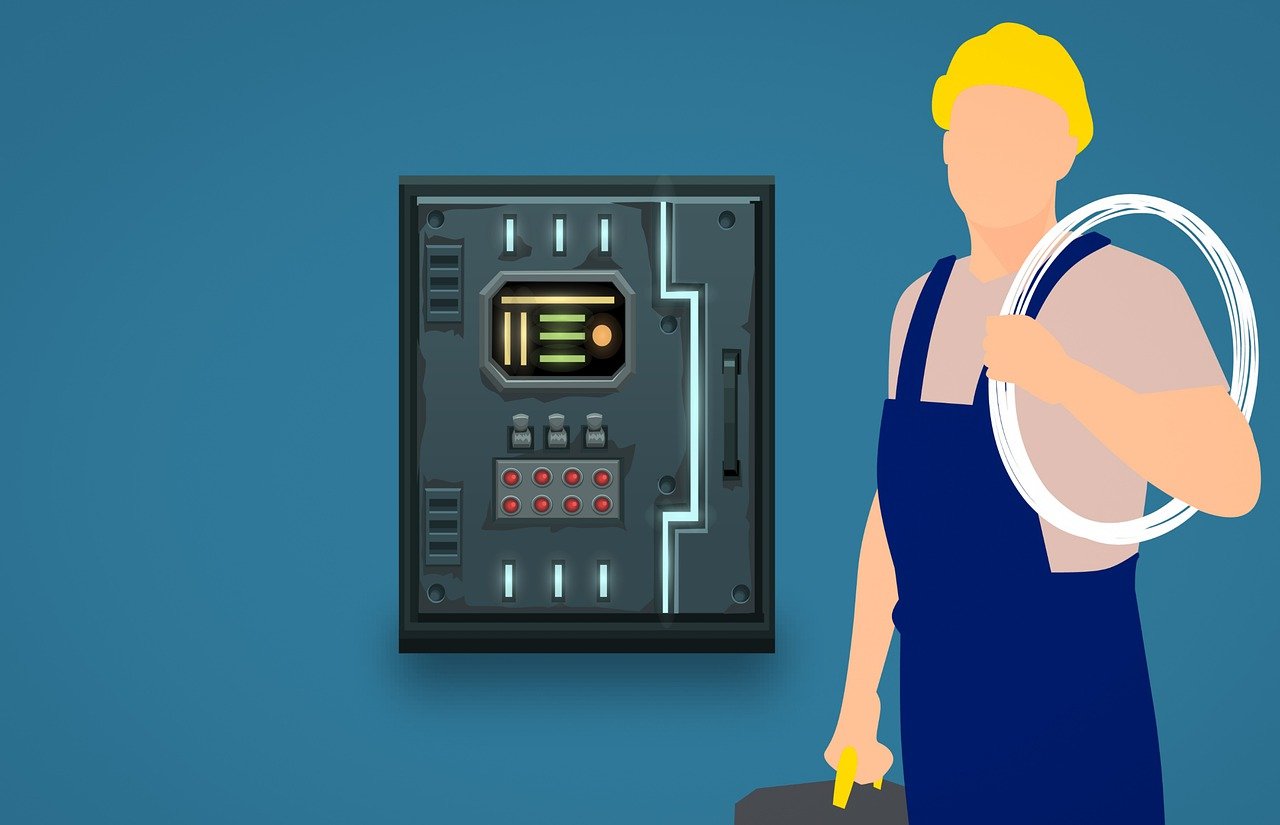
Uneven CoolingUneven cooling can result in certain areas of your home being too cold while others remain warm. This issue may be due to a blocked or closed vent, dirty coils or faulty thermostats. Solution
Check all vents for obstructions, clean coils if necessary and ensure that your thermostat is calibrated correctly.
Maintaining a well-functioning HVAC system involves attention to detail and it’s crucial to go beyond the basics to ensure optimal performance and energy efficiency. Here are some additional steps to consider alongside checking vents, cleaning coils and calibrating your thermostat:
Inspect Ductwork: Carefully examine your ductwork for any leaks, holes or disconnections. Leaky ducts can significantly reduce the efficiency of your HVAC system, leading to energy waste and uneven heating or cooling.
Change Air Filters: Regularly changing air filters is essential for maintaining indoor air quality and system efficiency. Depending on your system and filter type, this may need to be done every one to three months. Clean filters allow for better airflow and reduce the strain on your system.
Clear Outdoor Unit: If you have an outdoor AC unit, ensure that it is free from debris such as leaves, dirt or vegetation. A clear outdoor unit operates more efficiently, as it can expel heat effectively.
Program Thermostat: If you have a programmable thermostat, take advantage of its features to create temperature schedules that match your daily routine. This can help you save energy by automatically adjusting the temperature when you’re away or asleep.
Consider Smart Technology: Upgrading to a smart thermostat can provide even greater control and energy savings. These devices can learn your preferences and adjust settings based on factors like occupancy and weather conditions.
Schedule Professional Maintenance: While some maintenance tasks can be handled by homeowners, it’s wise to schedule regular professional HVAC inspections and tune-ups. A certified technician can identify and address issues that may not be apparent to the untrained eye, ensuring the longevity and efficiency of your system.
Evaluate Insulation: Adequate insulation in your home plays a vital role in maintaining a comfortable indoor environment. Ensure that your insulation is in good condition and meets current standards to prevent energy loss.
Consider Zoning: If your HVAC system allows for it, consider implementing zoning. Zoning divides your home into different temperature zones, allowing for more precise control over where and when heating or cooling is delivered. This can result in significant energy savings.
Upgrade to Energy-Efficient Equipment: If your HVAC system is aging or inefficient, it may be worth considering an upgrade to newer, more energy-efficient equipment. Energy Star-rated appliances can significantly reduce your energy consumption.
Implement Air Quality Solutions: Consider air purifiers or humidifiers/dehumidifiers if indoor air quality is a concern. These devices can enhance your overall comfort and well-being.
By combining these additional steps with regular HVAC maintenance, you can ensure that your heating and cooling systems operate optimally, saving you money, improving indoor comfort and reducing your environmental impact.
Don’t stop here; you can continue your exploration by following this link for more details: Quick2 Service | Kolkata
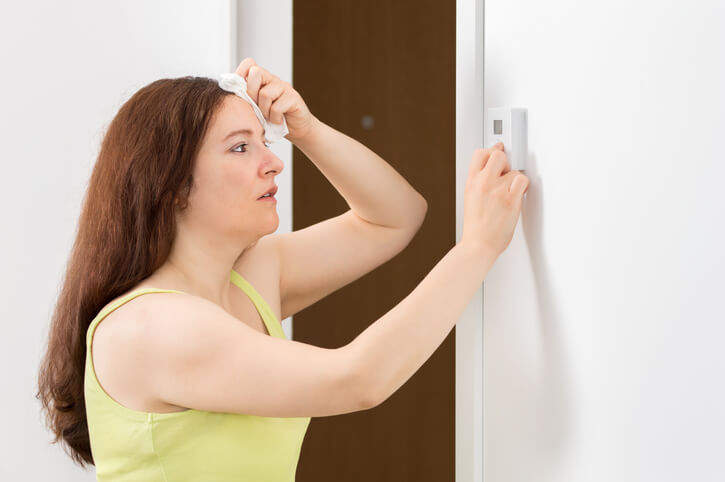
Strange NoisesUnusual noises, such as grinding, rattling or squealing, can indicate issues with your AC’s mechanical components. These noises may be due to loose or damaged parts. Solution
Turn off the AC immediately and inspect the unit. Tighten any loose components or replace damaged parts. If the problem persists, consult a professional.
“When faced with an AC malfunction, quick and decisive action is key to preventing further damage and ensuring your comfort is promptly restored. Here’s a step-by-step guide on what to do when you encounter an issue:
Turn Off the AC: If you notice any unusual sounds, odors or performance issues with your air conditioner, the first and most crucial step is to turn off the AC immediately. This prevents any potential damage from escalating and ensures your safety.
Inspect the Unit: Once the AC is turned off, conduct a visual inspection of the unit. Look for visible signs of damage, loose components or debris that may have accumulated around the unit. Keep safety in mind and avoid touching any electrical components.
Tighten Loose Components: If you identify loose bolts, screws or fasteners, you can attempt to tighten them with the appropriate tools. However, be cautious not to over-tighten or strip the threads, as this can lead to further issues.
Replace Damaged Parts: If you notice damaged or worn-out parts, such as a frayed power cord or a malfunctioning fan blade, it’s advisable to replace these components promptly. Using a damaged AC can pose safety risks and further damage the system.
Check the Filter: A clogged or dirty air filter can cause various AC problems, including reduced airflow and freezing of the evaporator coil. If the filter is dirty, replace it with a clean one according to the manufacturer’s recommendations.
Inspect for Refrigerant Leaks: Refrigerant leaks can impair the AC’s cooling capacity and lead to inefficient operation. Look for any signs of oil or refrigerant stains around the unit. If you suspect a leak, do not attempt to repair it yourself; instead, contact a professional HVAC technician.
Reset the AC: Some AC issues can be resolved by resetting the system. Refer to your AC’s user manual for instructions on how to perform a reset. This can help clear minor faults and restore normal operation.
Consult a Professional: If the problem persists after your initial inspection and basic troubleshooting, it’s time to consult a professional HVAC technician. They have the expertise and specialized equipment to diagnose and repair complex AC issues safely and effectively.
Preventive Maintenance: To avoid future AC problems, consider scheduling regular preventive maintenance. Professional maintenance services can identify and address potential issues before they escalate, ensuring your AC operates smoothly and efficiently.
Emergency Services: In cases of critical failures, such as a complete system shutdown or refrigerant leaks, it’s advisable to contact an HVAC professional for emergency services. They can provide prompt assistance to restore your cooling comfort.
Remember that attempting extensive AC repairs without the necessary knowledge and tools can lead to further damage or safety hazards. When in doubt, it’s always best to seek professional help to ensure your AC system is properly diagnosed, repaired and maintained for optimal performance and longevity.”
For a comprehensive look at this subject, we invite you to read more on this dedicated page: Signs An Air Conditioner Needs Repair | H&E Comfort Services
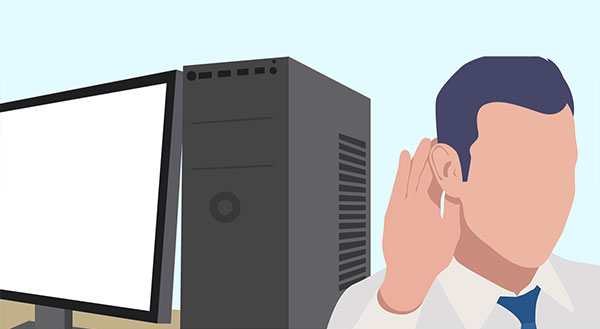
Water LeaksFinding water pooling around your AC unit or inside your home can be alarming. It often points to a clogged condensate drain line or a refrigerant leak. Solution
Clear the drain line of obstructions and ensure it’s properly sloped for drainage. If the problem continues, consult a professional to inspect for refrigerant leaks.
Maintaining a well-functioning air conditioning system involves more than just adjusting the thermostat. Here’s an extended idea that underscores the importance of clearing the drain line and addressing refrigerant leaks:
1. Preventing Drain Line Clogs: Clearing the drain line of obstructions is essential for the efficient operation of your AC system. Over time, algae, mold and debris can accumulate in the drain line, leading to blockages. A clogged drain line can result in water backing up into your system, potentially causing damage and reduced cooling efficiency. Regularly inspect and clean the drain line to prevent these issues.
2. Proper Drainage: In addition to clearing clogs, ensuring that the drain line is properly sloped for drainage is critical. The drain line should have a downward slope to allow condensate water to flow away from the unit. A well-sloped drain line prevents water buildup and potential leaks. This simple maintenance task goes a long way in preserving the integrity of your AC system.
3. Professional Inspection for Refrigerant Leaks: If you notice persistent issues with your AC system, such as reduced cooling capacity or irregular performance, it’s essential to consider the possibility of refrigerant leaks. Refrigerant is a crucial component in the cooling process and any loss can significantly affect your system’s efficiency. Consulting a professional HVAC technician is vital for identifying and addressing refrigerant leaks. They have the tools and expertise to pinpoint the source of the leak and perform the necessary repairs.
4. Environmental Responsibility: Detecting and repairing refrigerant leaks isn’t just about system performance; it’s also about environmental responsibility. Many refrigerants used in AC systems can be harmful to the environment if released into the atmosphere. By promptly addressing leaks, you prevent the release of these substances and contribute to a more eco-friendly and sustainable cooling solution.
5. Long-Term Savings: Proactive maintenance, including drain line clearance and refrigerant leak detection, can result in long-term savings. By preventing system damage and inefficiencies, you extend the lifespan of your AC unit, reduce energy consumption and avoid costly repairs or replacements down the road.
6. Comfort and Peace of Mind: A well-maintained AC system not only functions efficiently but also provides reliable and consistent cooling. This translates to improved comfort in your living space. Knowing that your system is in optimal condition also gives you peace of mind, especially during hot summer months when you rely on it most.
In summary, maintaining your AC system involves proactive measures such as clearing the drain line and addressing refrigerant leaks. These actions contribute to efficient operation, environmental responsibility, long-term savings and overall comfort. Regular maintenance and professional inspections are key to ensuring that your AC system operates at its best and serves you reliably for years to come.
For a comprehensive look at this subject, we invite you to read more on this dedicated page: New Jersey Field Guide – for Energy Auditors and Inspectors of …
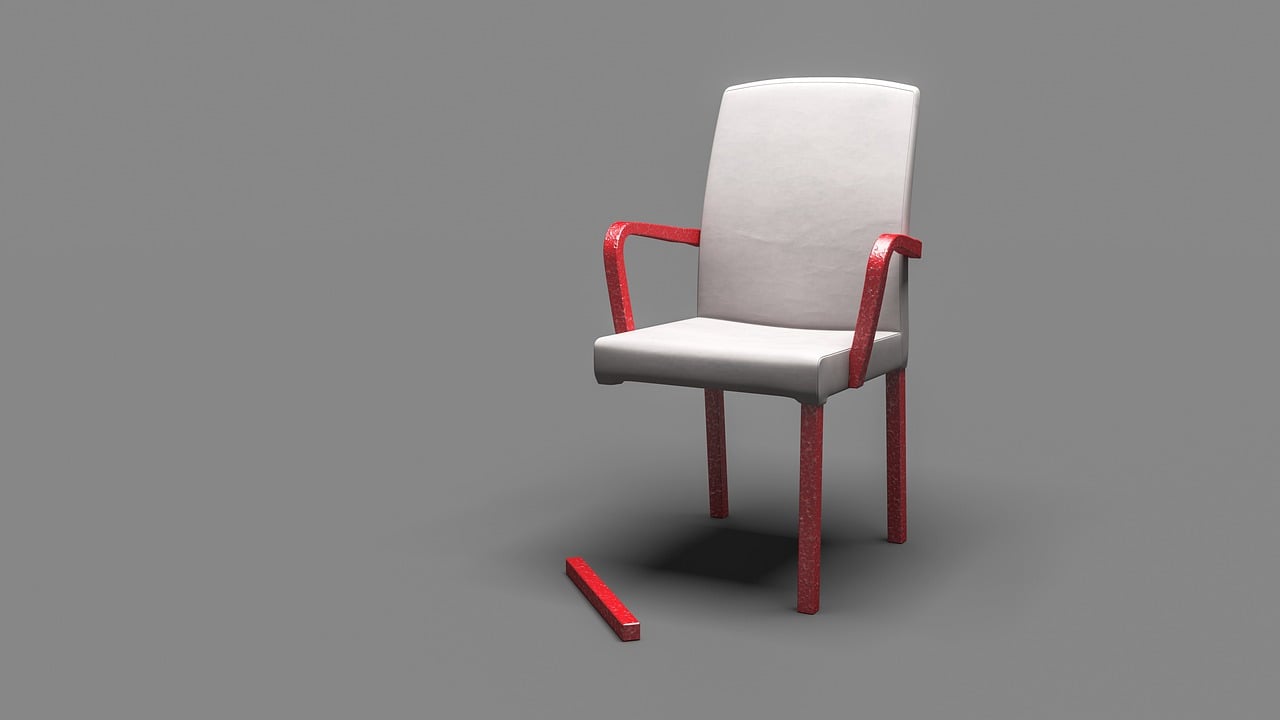
AC Won’t Turn OnIf your AC refuses to start, check the thermostat settings first. It might be set to a temperature higher than the current room temperature. Solution
Adjust the thermostat settings to a lower temperature and ensure it’s in the cooling mode. If the problem persists, check the circuit breaker and replace a blown fuse if necessary.
Troubleshooting issues with your air conditioning system can help you maintain a comfortable indoor environment. Let’s expand on the idea of adjusting the thermostat and checking for electrical problems:
Thermostat Adjustment: When you notice that your home isn’t cooling as expected, the first step is to adjust the thermostat settings. Lower the temperature setting to ensure that the system is in cooling mode. It’s essential to confirm that you’ve selected the appropriate temperature to trigger the cooling cycle.
Wait for a Response: After adjusting the thermostat, give the system a bit of time to respond. Air conditioning systems don’t provide instant cooling; it may take a few minutes for you to feel a noticeable change in temperature. Be patient and allow the system to work its magic.
Check the Air Filter: A clogged or dirty air filter can hinder airflow, reducing the system’s efficiency. Regularly check and replace the air filter as needed, especially during peak cooling seasons. A clean filter ensures that your AC system can operate at its full capacity.
Examine the Vents: Ensure that all vents in your home are open and unobstructed. Blocked or closed vents can disrupt the airflow, leading to uneven cooling. Adjust the vents as necessary to distribute cool air evenly throughout your living spaces.
Inspect for Leaks: Check around doors and windows for any air leaks. Proper insulation and sealing are essential to maintaining a comfortable indoor temperature. Seal any gaps or cracks with weatherstripping or caulking to prevent cool air from escaping and warm air from entering.
Routine Maintenance: Regular AC maintenance is vital for optimal performance. Schedule annual professional inspections to identify and address potential issues before they become major problems. A well-maintained system not only cools efficiently but also has a longer lifespan.
Circuit Breaker and Fuses: If adjusting the thermostat and performing basic checks don’t resolve the issue, investigate the electrical components. Check the circuit breaker for the AC unit to ensure it hasn’t tripped. If it has, reset it and monitor the system. Additionally, inspect the fuses in the electrical panel to see if any have blown. Replace blown fuses to restore power to the unit.
Safety First: When dealing with electrical components, safety is paramount. If you’re not comfortable or experienced in working with electricity, it’s best to consult a qualified technician to diagnose and resolve electrical issues.
Professional Help: If you’ve gone through these steps and your AC system still isn’t cooling properly, it’s time to contact a professional HVAC technician. They have the expertise and tools to diagnose and repair complex issues, ensuring that your cooling system is back in optimal working condition.
By following these steps and conducting regular maintenance, you can troubleshoot common AC issues and help ensure that your cooling system operates efficiently and effectively, keeping your home comfortable even in the hottest weather.
Additionally, you can find further information on this topic by visiting this page: Thermostat Not Reaching Set Temperature? Try These Fixes First!

Frozen Evaporator CoilA frozen evaporator coil indicates an airflow issue or refrigerant problems. Solution
Turn off the AC and allow the coil to thaw. Inspect the air filter and replace it if needed. If the issue persists, consult a professional to assess refrigerant levels and address any leaks.
Turning off the AC and allowing the coil to thaw is a crucial step in troubleshooting cooling system issues. However, it’s just the beginning of the process to ensure your AC runs smoothly. Here’s an extended idea on how to tackle this situation effectively:
Turn off the AC and Allow the Coil to Thaw: When you notice reduced cooling efficiency or ice buildup on the coil, the first step is to turn off the AC. Allowing the coil to thaw is essential as it helps restore proper airflow and prevents potential damage to the system. This usually takes a few hours, but it’s a critical step.
Inspect and Replace the Air Filter: While waiting for the coil to thaw, take the opportunity to inspect the air filter. A clogged or dirty filter can restrict airflow, making your AC work harder and less efficiently. If the filter is visibly dirty or hasn’t been replaced in a while, it’s advisable to install a new one. A clean filter ensures better air quality and system performance.
Examine the Evaporator and Condenser Coils: Once the system has thawed and you’ve replaced the air filter, inspect the evaporator and condenser coils for dirt and debris. Dirty coils can hinder heat exchange and cooling efficiency. If you notice a significant buildup of dirt or grime, gently clean the coils with a soft brush or a specialized coil cleaner. Clean coils are essential for optimal AC performance.
Check for Obstructions: Inspect the area around your outdoor condenser unit. Ensure there are no obstructions like overgrown vegetation, debris or objects blocking the airflow. Adequate airflow around the condenser is essential for efficient cooling.
Inspect Refrigerant Levels: If after these steps, your AC still isn’t performing as expected, it’s time to consult a professional technician. They can assess the refrigerant levels in your system. Low refrigerant levels can lead to reduced cooling capacity and potentially indicate a leak in the system. A professional will diagnose the issue, repair any leaks and recharge the refrigerant to the correct levels.
Regular Professional Maintenance: To prevent such issues in the future, consider scheduling regular professional maintenance for your AC system. Professional technicians can identify and address potential problems before they escalate, ensuring your AC operates efficiently and reliably throughout the season.
Energy-Efficiency Tips: As a proactive measure, consider implementing energy-efficient practices to reduce the strain on your AC system. This includes sealing ductwork, installing programmable thermostats and using ceiling fans to distribute cool air more effectively.
By following these steps, you can troubleshoot common AC issues and maintain your system’s efficiency and longevity. Remember that if you encounter complex problems or if the issue persists, it’s best to consult a qualified HVAC technician to ensure your cooling system operates at its best. Regular maintenance and proactive care can help you enjoy a comfortable and efficient cooling experience year after year.
Explore this link for a more extensive examination of the topic: Air Conditioning Repair Near Me – 24-Hour AC Repair | One Hour
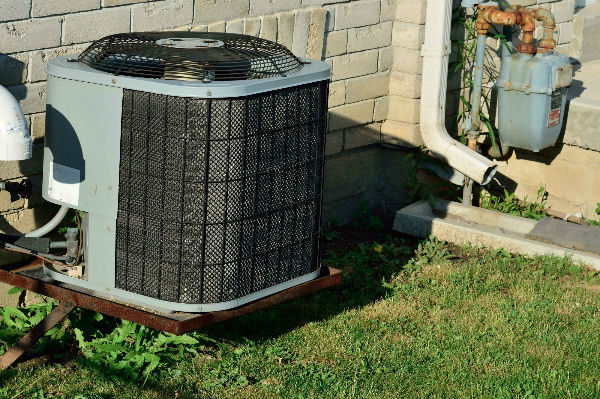
Additional Considerations
Dealing with common AC issues can be both manageable and cost-effective with a little DIY troubleshooting. Regular maintenance, such as changing air filters and cleaning coils, can go a long way in preventing problems. However, for more complex issues or if you’re unsure about the cause of the problem, it’s wise to seek professional HVAC services. By staying proactive and addressing issues promptly, you can ensure that your air conditioning system continues to provide the comfort you need during hot summer days, while also extending its lifespan.
Dealing with common AC issues can be both manageable and cost-effective with a little DIY troubleshooting. Regular maintenance, such as changing air filters and cleaning coils, can go a long way in preventing problems. However, for more complex issues or if you’re unsure about the cause of the problem, it’s wise to seek professional HVAC services. By staying proactive and addressing issues promptly, you can ensure that your air conditioning system continues to provide the comfort you need during hot summer days, while also extending its lifespan.
Maximizing Energy Efficiency
One significant benefit of addressing common AC issues and performing regular maintenance is improved energy efficiency. When your system is running smoothly, it consumes less energy to maintain the desired temperature. This not only lowers your monthly utility bills but also reduces your carbon footprint, contributing to a more sustainable environment. Plus, an efficiently operating AC system is less likely to break down unexpectedly, saving you from costly repairs.
Enhancing Indoor Air Quality
Air quality matters, especially if you or your family members suffer from allergies or respiratory conditions. A well-maintained AC system with clean filters and coils helps remove allergens, dust and pollutants from the air. This leads to better indoor air quality, reducing the risk of health issues and creating a more comfortable living environment.
Prolonging the Lifespan of Your AC
Investing time in regular AC maintenance can significantly extend the lifespan of your system. Air conditioners are not inexpensive and replacing one prematurely due to neglect can be a significant financial burden. By taking care of your AC through routine maintenance, you can maximize its longevity, ensuring that your investment lasts for years to come.
Preventing Costly Repairs
Small issues left unattended can escalate into more significant and costly problems. Addressing common AC issues promptly can help you avoid expensive repairs down the road. For example, a simple refrigerant leak, if not fixed early, can damage the compressor and result in a substantial repair bill. Preventive measures can save you money in the long run.
Comfort and Peace of Mind
Perhaps the most immediate benefit of staying on top of AC maintenance is the comfort and peace of mind it brings. Knowing that your system is running efficiently, providing cool air when needed and not posing any safety risks is invaluable. You can enjoy a comfortable living environment without the stress of unexpected breakdowns or health concerns related to poor indoor air quality.
In conclusion, dealing with common AC issues through DIY troubleshooting and regular maintenance is a proactive and cost-effective approach to ensure your comfort, save money and reduce your environmental impact. While some tasks are well-suited for DIY enthusiasts, it’s essential to recognize your limitations and seek professional assistance when necessary. By making AC maintenance a routine part of your home care, you can enjoy the benefits of a reliable, efficient and long-lasting cooling system.
Explore this link for a more extensive examination of the topic: Common mental health problems in immigrants and refugees …
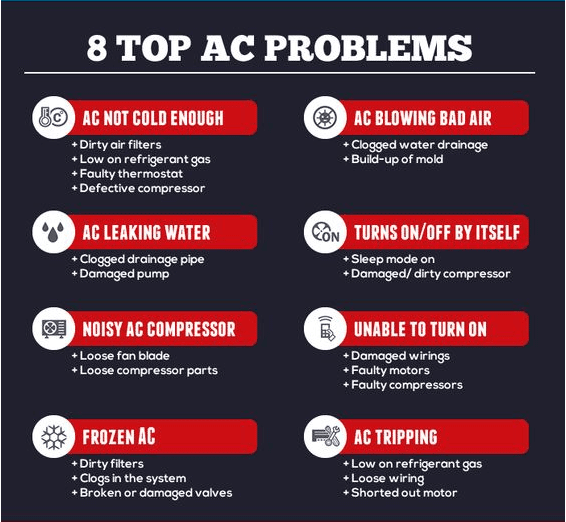
More links
Should you desire more in-depth information, it’s available for your perusal on this page: Air Conditioner Troubleshooting: 12 Common Problems
